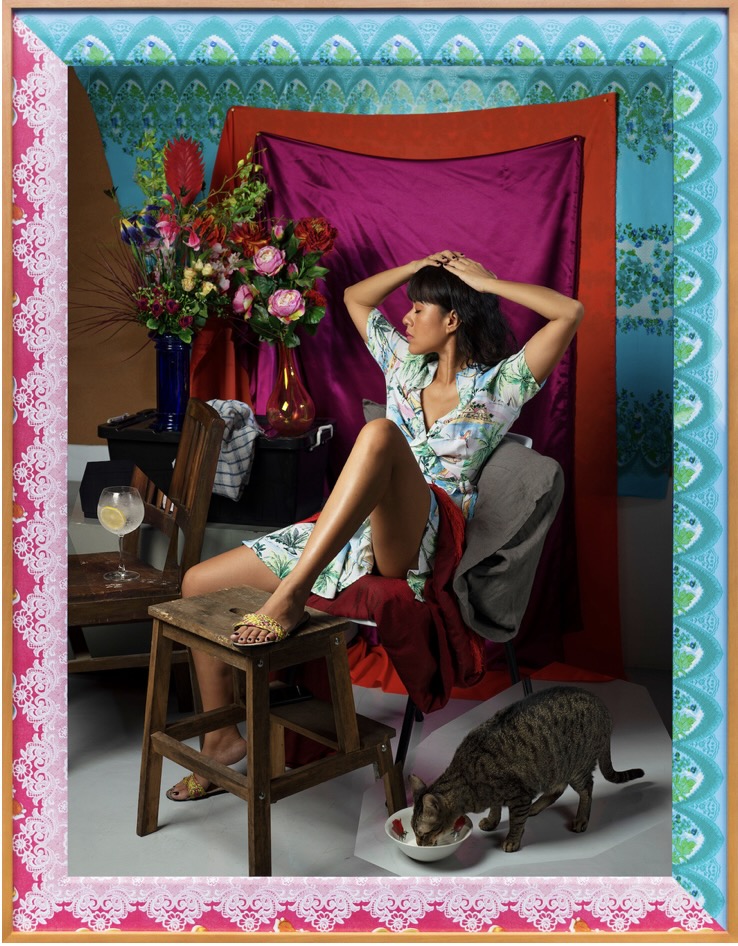May in Manila / Hot Summer (After Balthus, Self-Portrait)
Wawi Navarozza
Archival pigment print on Hahnemuhle, cold mounted on acid-free aluminium, with artist's exhibition frame, i.e., wrapped fabric on double wood frame custom tinted to WN skin tone - 2019
135.89 cm x 101.6 cm, Edition 1 of 5

May in Manila/Hot Summer (After Balthus, Self- Portrait), (2019) is part of the artist’s acclaimed series that uses a mix of decorative materials and digital photography techniques to explore themes of identity, gender roles, and female representation while questioning the veracity of photographic images and appropriation and originality in art. The work references Balthus’ painting, Girl with Cat, (1937) which plays on voyeurism to challenge traditions of representing sexuality in Western painting. In Navarozza’s version, the artist herself adopts a pose of languid repose within the confines of a small room. The space has been decorated with large floral bouquets in colourful vases, wooden furniture, and layers of colourful fabric strewn over the furniture or pinned as a backdrop for this staged scene. The floral patterned vinyl tablecloth used on the wall, together with a lace version, finds itself wrapped onto the brown outer frame which has been tinted to match the artist’s exact skin colour.
A key element of this mis-en-scene is the cocktail glass perched on a nearby chair. It distances Navarozza’s version from the underage taboos of the original work and presents instead a contemporary representation of femininity, sexuality, and identity. The eclectic mix of decorative elements and the deliberate tinting of the wood frame to match the artist’s skin tone locates this work within post-colonial dialogues where “browness” and what Navarozza refers to as the “tropical gothic” might encompass all that is vital, contradictory, and resilient in Filipino culture.
The cat in this image has been digitally added by the artist, deliberately retaining the visible cropped borders in the final version. In paying homage to a famous artwork, Navarozza’s photographic practice strongly recalls the painting traditions of self-portraiture, figuration, and the popular still-life genre. But in her explorations of the possibilities of her chosen medium, Navarozza also questions photography’s traditional function to record and reflect reality. The glitched section in her image is as much a visual signature as her carefully staged tableau, a disruption that ultimately questions how we should engage with images in this complex age of digital technology, social media, and artificial intelligence.

Subscribe and Stay Updated with us!
If you like to stay updated on the latest news about the collection, please enter your emai.
